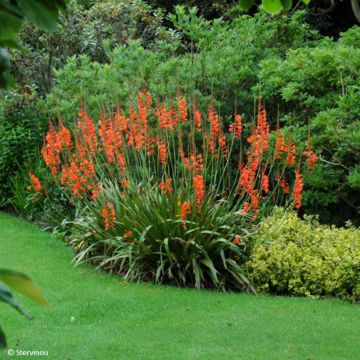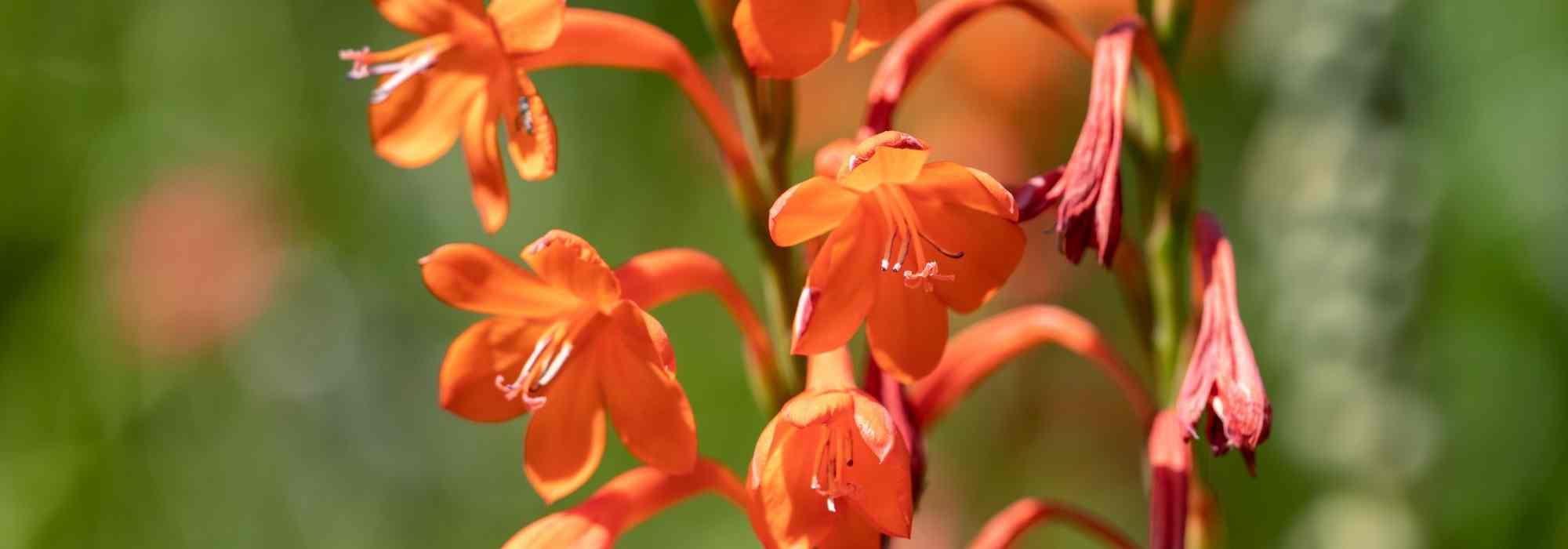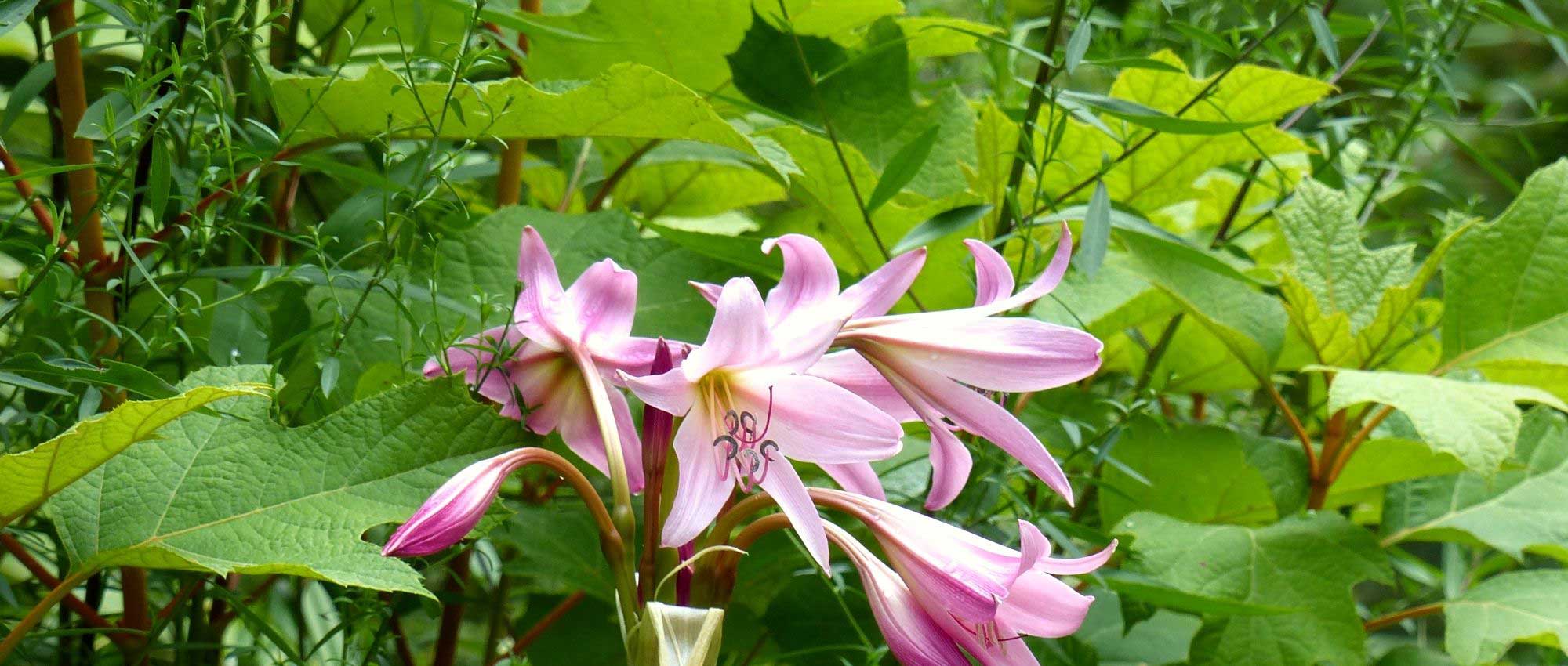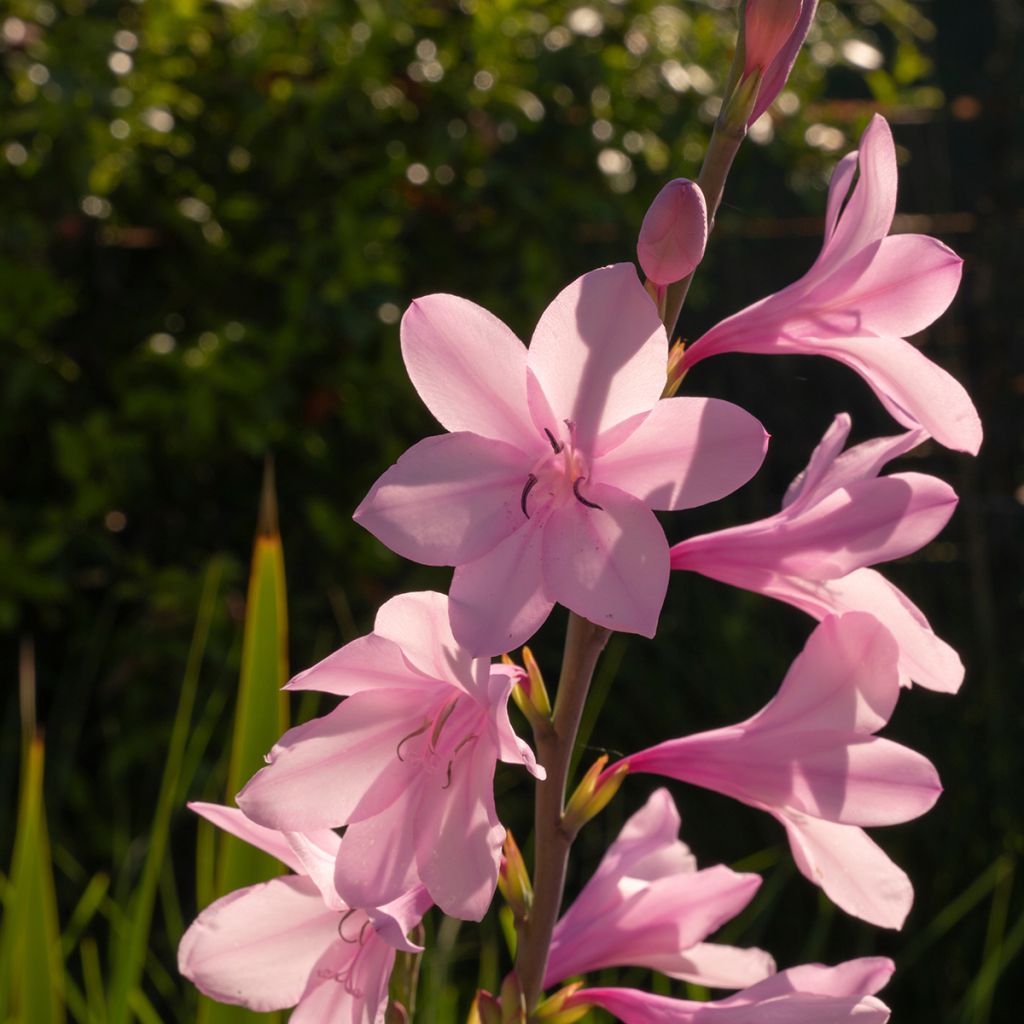

Watsonia borbonica - Cape bugle-lily
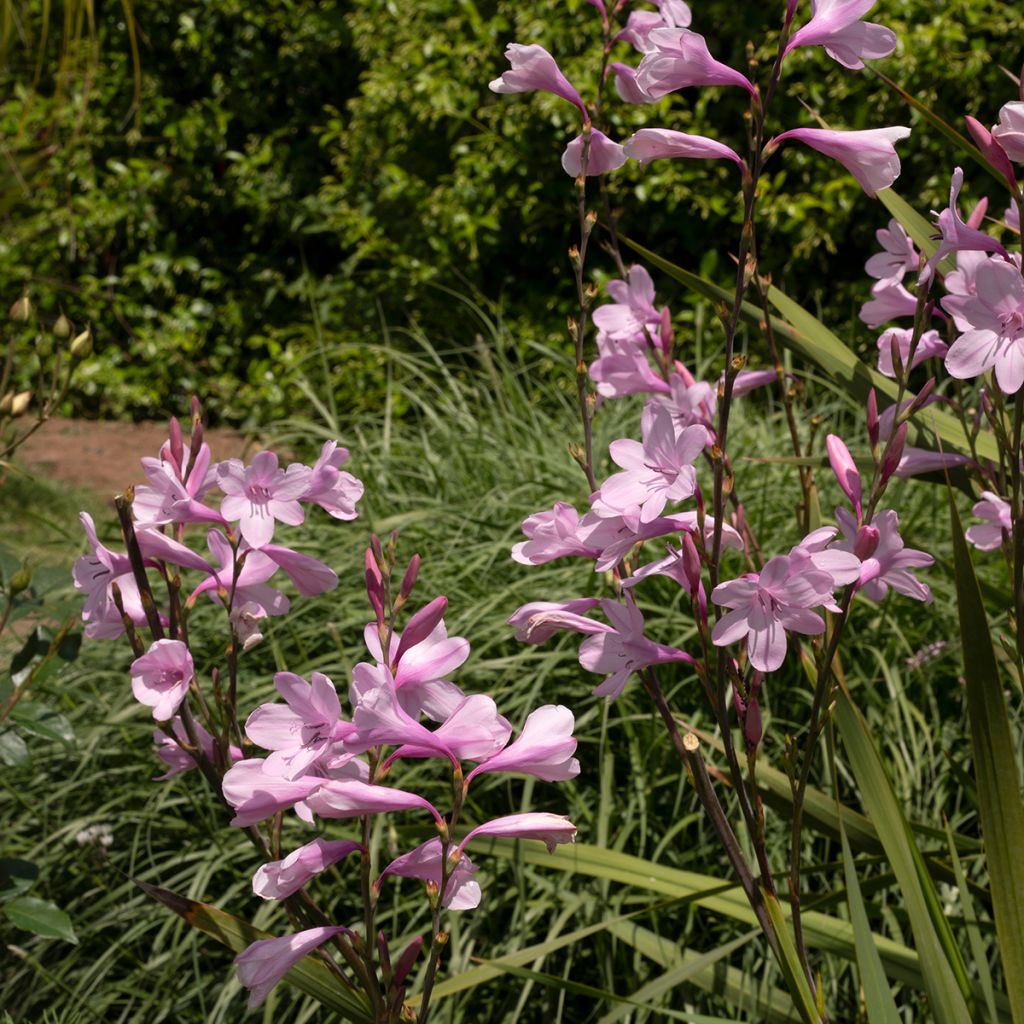

Watsonia borbonica - Cape bugle-lily
Watsonia borbonica - Cape bugle-lily
Watsonia borbonica
Cape bugle-lily, Bourbon Watsonia, Bugle Lily
Special offer!
Receive a €20 voucher for any order over €90 (excluding delivery costs, credit notes, and plastic-free options)!
1- Add your favorite plants to your cart.
2- Once you have reached €90, confirm your order (you can even choose the delivery date!).
3- As soon as your order is shipped, you will receive an email containing your voucher code, valid for 3 months (90 days).
Your voucher is unique and can only be used once, for any order with a minimum value of €20, excluding delivery costs.
Can be combined with other current offers, non-divisible and non-refundable.
Why not try an alternative variety in stock?
View all →This plant carries a 12 months recovery warranty
More information
We guarantee the quality of our plants for a full growing cycle, and will replace at our expense any plant that fails to recover under normal climatic and planting conditions.
Would this plant suit my garden?
Set up your Plantfit profile →
Description
Watsonia borbonica is a perennial bulb forming a clump of elongated and upright leaves that can reach 50 to 80 cm long and high. Above the foliage, flower spikes up to 1.5 to 2 m high bearing pink tubular flowers rise. The flowering resembles that of gladioli but lighter and taller. The flowers usually appear in spring. The flowering period varies from region to region. The Watsonia of Bourbon is a plant that is easy to grow in pots everywhere, but can only be grown in the ground in mild climates.
From the Iridaceae family like Crocosmias and Gladioli, Watsonia borbonica or pyramidata is a cormous plant native to South Africa, specifically the Cape region. It is a winter-growing plant in its native region, which explains its great flexibility in terms of flowering period in our latitudes. It can flower as early as April and until July, depending on the region. The Watsonia of Bourbon forms a clump of dark green to medium green, shiny, slender and upright leaves like those of gladioli, with a height of 50 to 80 cm. Graceful spikes of pink flowers rise, usually in spring, to almost 1.5 to 2 m high. They are tubular, 3 cm in length and have 6 tepals. About ten flowers are distributed on each branched floral stem.
The inflorescences of Watsonia borbonica create sculptural compositions with a touch of lightness and exoticism. This not very hardy, cormous plant will make beautiful pots for your terrace or balcony. Incorporate it into your beds and mixed borders with grasses like Pennisetum alopecuroides 'Red Head' and in the foreground some clumps of Kniphofia 'Pineapple Popsicle' with cream-yellow flowers. In colder regions, grow Watsonia like gladioli. Once the foliage has turned yellow, dig up the bulbs and store them for winter in a dry and frost-free place until the following spring.
Flowering
Foliage
Plant habit
Botanical data
Watsonia
borbonica
Iridaceae
Cape bugle-lily, Bourbon Watsonia, Bugle Lily
South Africa
Other Watsonia
View all →Planting and care
Watsonia borbonica thrives in the sun or possibly in partial shade in the south. It likes rich soil, remaining moist in summer, but well-drained. It dislikes limestone soils and tolerates wind well. This non-hardy bulb (to -7°C) is ideal in a mild climate. It can be planted in the ground in the Mediterranean region or mild seaside gardens. Everywhere else, plant it in a pot or store the bulbs in a box filled with compost in a dry and frost-free place until the following spring. Even in a mild climate, it is a good idea to protect the crown with a good layer of dead leaves (about 30 cm). At planting, add sand and well-decomposed manure and plant the bulbs 10-12 cm deep. Add compost every year. Water it in dry summer or if it is grown in a pot. After 4 to 5 years, you can divide the clump.
Planting period
Intended location
Care
Planting & care advice
This item has not been reviewed yet - be the first to leave a review about it.
Haven't found what you were looking for?
Hardiness is the lowest winter temperature a plant can endure without suffering serious damage or even dying. However, hardiness is affected by location (a sheltered area, such as a patio), protection (winter cover) and soil type (hardiness is improved by well-drained soil).

Photo Sharing Terms & Conditions
In order to encourage gardeners to interact and share their experiences, Promesse de fleurs offers various media enabling content to be uploaded onto its Site - in particular via the ‘Photo sharing’ module.
The User agrees to refrain from:
- Posting any content that is illegal, prejudicial, insulting, racist, inciteful to hatred, revisionist, contrary to public decency, that infringes on privacy or on the privacy rights of third parties, in particular the publicity rights of persons and goods, intellectual property rights, or the right to privacy.
- Submitting content on behalf of a third party;
- Impersonate the identity of a third party and/or publish any personal information about a third party;
In general, the User undertakes to refrain from any unethical behaviour.
All Content (in particular text, comments, files, images, photos, videos, creative works, etc.), which may be subject to property or intellectual property rights, image or other private rights, shall remain the property of the User, subject to the limited rights granted by the terms of the licence granted by Promesse de fleurs as stated below. Users are at liberty to publish or not to publish such Content on the Site, notably via the ‘Photo Sharing’ facility, and accept that this Content shall be made public and freely accessible, notably on the Internet.
Users further acknowledge, undertake to have ,and guarantee that they hold all necessary rights and permissions to publish such material on the Site, in particular with regard to the legislation in force pertaining to any privacy, property, intellectual property, image, or contractual rights, or rights of any other nature. By publishing such Content on the Site, Users acknowledge accepting full liability as publishers of the Content within the meaning of the law, and grant Promesse de fleurs, free of charge, an inclusive, worldwide licence for the said Content for the entire duration of its publication, including all reproduction, representation, up/downloading, displaying, performing, transmission, and storage rights.
Users also grant permission for their name to be linked to the Content and accept that this link may not always be made available.
By engaging in posting material, Users consent to their Content becoming automatically accessible on the Internet, in particular on other sites and/or blogs and/or web pages of the Promesse de fleurs site, including in particular social pages and the Promesse de fleurs catalogue.
Users may secure the removal of entrusted content free of charge by issuing a simple request via our contact form.
The flowering period indicated on our website applies to countries and regions located in USDA zone 8 (France, the United Kingdom, Ireland, the Netherlands, etc.)
It will vary according to where you live:
- In zones 9 to 10 (Italy, Spain, Greece, etc.), flowering will occur about 2 to 4 weeks earlier.
- In zones 6 to 7 (Germany, Poland, Slovenia, and lower mountainous regions), flowering will be delayed by 2 to 3 weeks.
- In zone 5 (Central Europe, Scandinavia), blooming will be delayed by 3 to 5 weeks.
In temperate climates, pruning of spring-flowering shrubs (forsythia, spireas, etc.) should be done just after flowering.
Pruning of summer-flowering shrubs (Indian Lilac, Perovskia, etc.) can be done in winter or spring.
In cold regions as well as with frost-sensitive plants, avoid pruning too early when severe frosts may still occur.
The planting period indicated on our website applies to countries and regions located in USDA zone 8 (France, United Kingdom, Ireland, Netherlands).
It will vary according to where you live:
- In Mediterranean zones (Marseille, Madrid, Milan, etc.), autumn and winter are the best planting periods.
- In continental zones (Strasbourg, Munich, Vienna, etc.), delay planting by 2 to 3 weeks in spring and bring it forward by 2 to 4 weeks in autumn.
- In mountainous regions (the Alps, Pyrenees, Carpathians, etc.), it is best to plant in late spring (May-June) or late summer (August-September).
The harvesting period indicated on our website applies to countries and regions in USDA zone 8 (France, England, Ireland, the Netherlands).
In colder areas (Scandinavia, Poland, Austria...) fruit and vegetable harvests are likely to be delayed by 3-4 weeks.
In warmer areas (Italy, Spain, Greece, etc.), harvesting will probably take place earlier, depending on weather conditions.
The sowing periods indicated on our website apply to countries and regions within USDA Zone 8 (France, UK, Ireland, Netherlands).
In colder areas (Scandinavia, Poland, Austria...), delay any outdoor sowing by 3-4 weeks, or sow under glass.
In warmer climes (Italy, Spain, Greece, etc.), bring outdoor sowing forward by a few weeks.






























